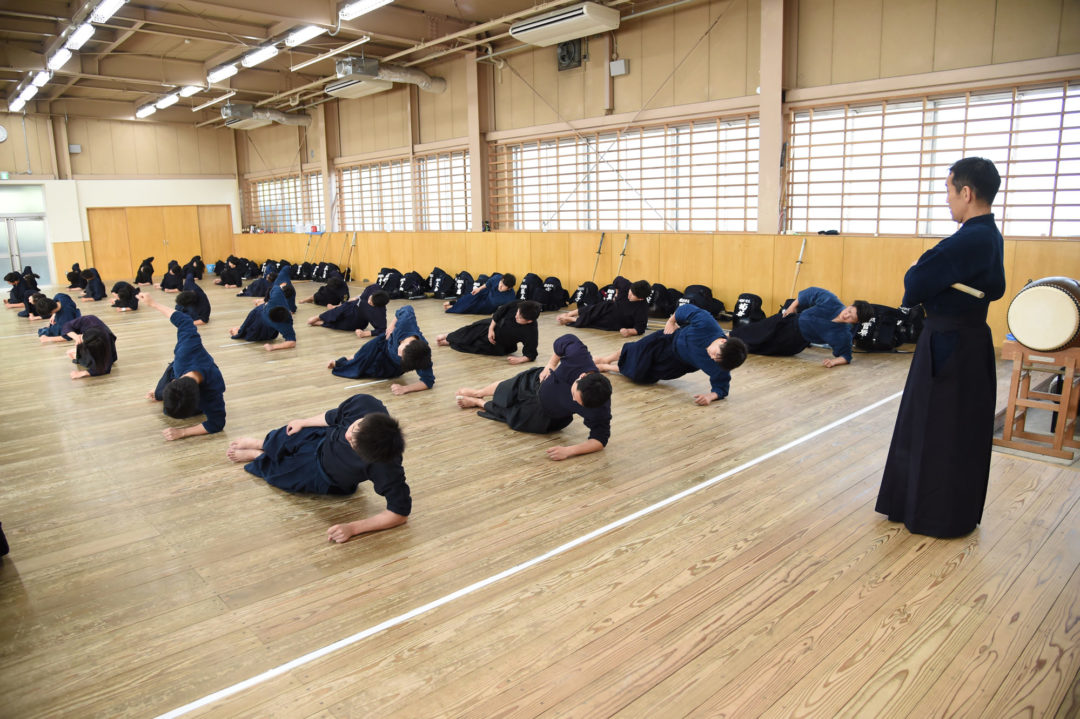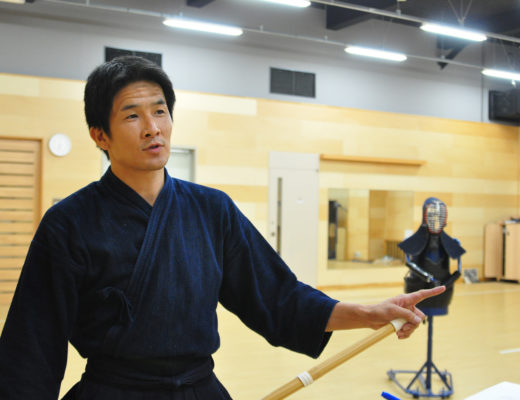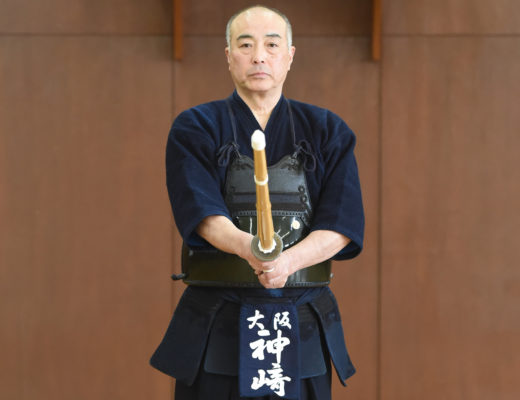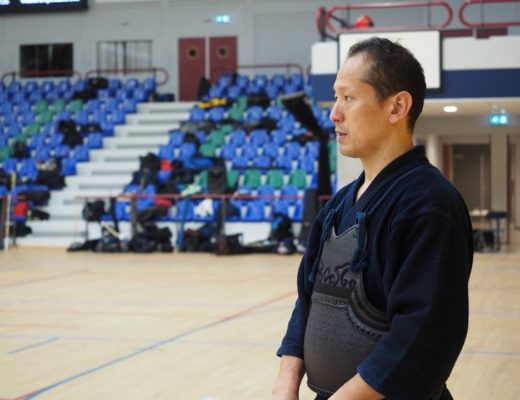KENDOJIDAI 2019.8
Training time is limited for non-professionals. However, you should train everyday even if it’s just for 10 minutes. In addition, solo Keiko and training is effective when you are injured and you can’t put your Men on. Furthermore, daily physical training done right leads to prevention of injuries and increases the quantity and quality of your regular Keiko. The key is endurance. We spoke with Professor Takahashi, a leading sports biomechanic and the Japanese representatives’ physical training coach, on how to maintain body and muscle endurance.
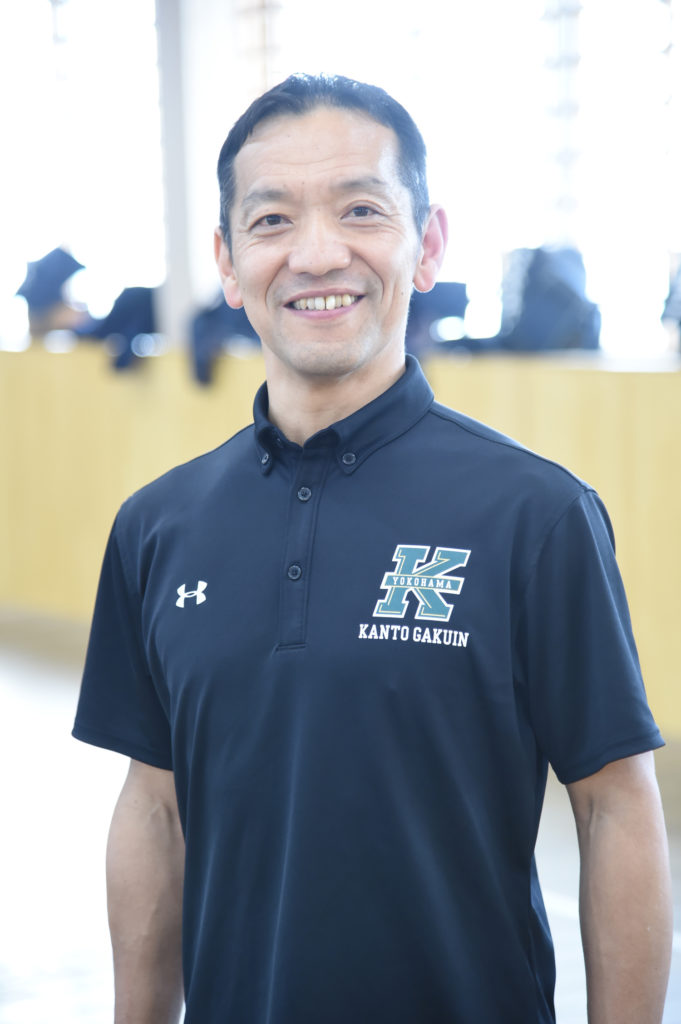
Professor at Kanto Gakuin University Born in Gunma Prefecture in 1972. From Sugamo High School, he moved to Yokohama National University where he got a master’s degree. He went on to obtain his PhD. at Nippon Sport Science University. Since 2006, he has been physical training coach of the All Japan representatives’. After working at Gunma College of Technology, he became a professor at Kanto Gakuin University, where he is head coach of the Kendo club today.
The importance of physical training
What is the aim of physical training? The first major goal is to avoid injuries. Those who practice on a daily basis must interrupt their training if they get injured which prevents them from performing to their satisfaction in Shiai and examinations. I think that preventing injuries leads to improved performance as a result.
Non professionals don’t get to do Keiko every day. If you don’t exercise your body on a regular basis and you injure yourself by overdoing it you will miss out on precious Keiko even more. Therefore, doing even 10 minutes of physical training every day can be of great value.
For high school and university students who practice every day in club activities, counting the number of Shinai swings shows that they do about 2,000 swings in one Keiko. On average, one strike per second is done during Kirikaeshi or Kakarigeiko, so a 30 second Kakarigeiko is around 30 strikes. There is also Kihon practice and such, which all adds up.
So what can you do instead of just dropping your Shinai when you get injured? You could keep doing Suburi to keep your arm strength up. However, everyone who gets injured knows that your endurance gets affected as well. You will be out of breath faster when you return to Keiko. If you are out of breath in 5 minutes during a 10 minute Keiko, you might slack off in the last 5 minutes. This doesn’t make for a good Keiko. 5 minutes in one Keiko doesn’t seem like much but it becomes a huge reduction when you look at it over the span of a month or a year. Therefore, it is essential to do endurance training as well.
There are two types of endurance
Physical training in itself doesn’t make you stronger in Kendo. Doing Keiko with your Men on is the most efficient way. However, I’d like to talk about the situation wherein you aren’t able to do so for some reason. There is a tendency to lean towards maintaining muscular strength but let’s think about endurance for a moment.
Endurance declines easier than muscle strength. Some people say you will get 3 days behind for a day without Keiko. Even if that’s an exaggeration, it will decline after a few weeks.
Endurance includes that of the whole body and that of the muscles, and it is important not to drop either. Techniques and strategy will not decline much once attained. However, if you realize in your mind that you can make something happen but your body won’t follow, that usually means it’s an endurance related issue. If you had a break due to an injury for example, doing physical training allows you to get back into Keiko right away.
Maintain and improve awareness
The important thing about endurance is whether the brain commands are followed by the muscles accordingly. Therefore, it is important to make the brain aware of which muscles are moving and used during physical training. When you set out to improve the right transmission from the brain repetitively, a neural network for the command circuit is created. When that happens, you will be able to make your body move with the cerebellum instead of thinking it out with the cerebrum which takes more time. For a good body response, the formation of such a neural circuit is essential.
The endurance and strength of the whole body will surely increase if you train continuously. If you train correctly, your efforts will pay off. So “losing because of lack of physical strength” is not an excuse and just indicates a lack of effort.
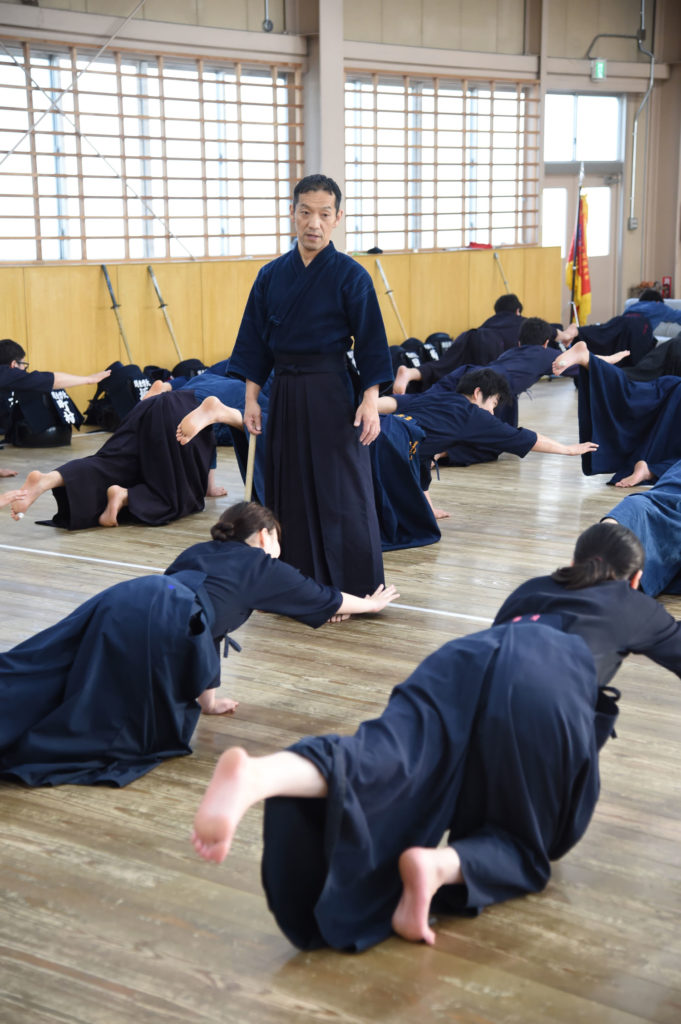
Continued physical training 10 minutes a day
I would like to introduce a training schedule that can be done anywhere in the house and has a high effectiveness. Moreover, the training time can be as short as 10 minutes a day.
To improve flexibility, rhythmic gymnastics athletes brush their teeth, go to the bathroom, and always do a stretch before going to bed. It appears that top level athletes in any field are more likely to have such training methods in their daily routine. The same goes for Kendo. I am the physical training coach for the Japanese representatives and it is my impression that strong competitors like them have similar rituals.
The focus is on core training that can be performed in a limited space, for example at home. It can also be effective to be aware of exercising while walking when commuting to work or school. It would be ideal if you had time to jog long distances, but let’s start within the range of possibilities.
The benefits of training your core are great for many things. If you can balance your abs and back muscles you will not lose your balance when you are caught unaware by Taiatari and it reduces the risk of injury. It also enables you to perform Ippons without disrupting your posture.
Kendo is an athletic movement so in reality the moment you strike, your body inevitably becomes unbalanced. However, skilled people use their core and are quick to reposture from there. As you can see from the series of photographs, at the time of the strike there are moments of disturbance in balance. However, to the naked eye it looks like a clean strike. This is because they are recovering with the power of their core immediately. Please train yourself by taking a little time in your daily routine and improve the quality of your Kendo. Below are 18 training methods.
The rest of this article is only available for Kendo Jidai International subscribers!

